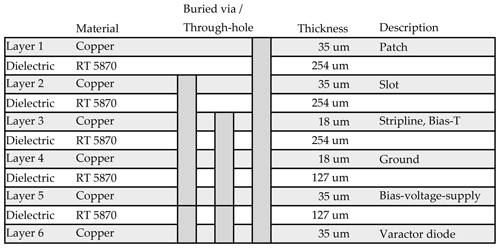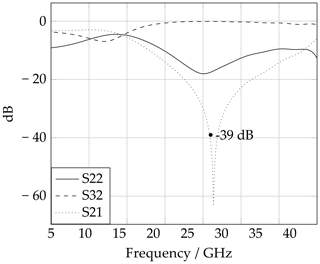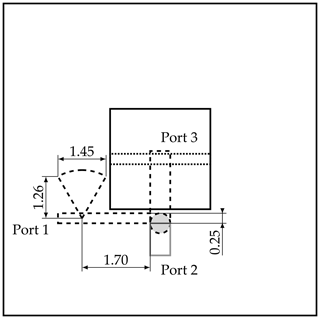Design of a continuously tunable reflectarray element for 5G metrology in the k-band
We introduce a new tunable reflectarray element for an operation frequency of 26 GHz in the k-band. It is shown that a 340∘ continuous tunning range of the reflected wave can be accomplished by using an aperture-coupled patch antenna with only one single varactor diode. The simplified design and the small needed space make it usable for k-band reflectarrays with many elements. The functionality of the reflectarray element is explained and the crucial parts are analyzed. The approach to get a full phase shift is discussed in detail. A bias-T is developed to provide the control voltage to the varactor diode without interfering with the high frequency path. The high frequency path and the DC-path are decoupled by 39 dB using a bias-T. A commercial off-the-shelf varactor diode is selected and its functionality at 26 GHz is verified. Therefore, a test printed circuit board with through, reflect, line standards is developed to de-embed the varactor diode and to evaluate it with a vector network analyzer. The reflectarray is simulated in a unit cell with plane wave excitation and periodic boundary condition using the simulation software package CST Microwave Studio™.













